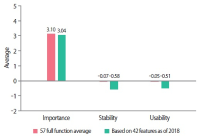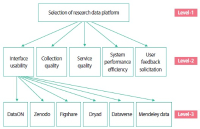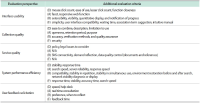ISSN : 2287-9099
Vol.8 No.2
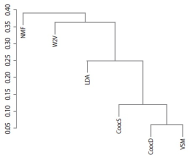
Abstract
Word similarity is often measured to enhance system performance in the information retrieval field and other related areas. This paper reports on an experimental comparison of values for word similarity measures that were computed based on 50 intentionally selected words from a Reuters corpus. There were three targets, including (1) co-occurrence-based similarity measures (for which a co-occurrence frequency is counted as the number of documents or sentences), (2) context-based distributional similarity measures obtained from a latent Dirichlet allocation (LDA), nonnegative matrix factorization (NMF), and Word2Vec algorithm, and (3) similarity measures computed from the tf-idf weights of each word according to a vector space model (VSM). Here, a Pearson correlation coefficient for a pair of VSM-based similarity measures and co-occurrence-based similarity measures according to the number of documents was highest. Group-average agglomerative hierarchical clustering was also applied to similarity matrices computed by individual measures. An evaluation of the cluster sets according to an answer set revealed that VSM- and LDA-based similarity measures performed best.


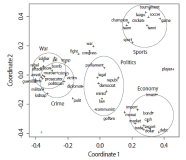
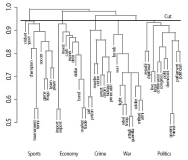
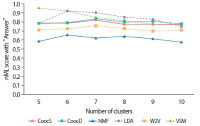








Abstract
Cognitive biases can influence human information behaviour and decisions made in information behaviour and use. This study aims to identify the biases involved in some aspects of information behaviour and the role they play in information behaviour and use. Twenty-five semi-structured face-to-face interviews were conducted in an exploratory qualitative study with graduate (MA and PhD) students who were at the stage of their dissertation/thesis research. Eisenberg & Berkowitz Big6TM Skills for Information Literacy was adopted as a framework for interviews and the analysis was done using grounded theory coding method. The findings revealed the presence of twenty-eight biases in different stages of information behaviour, including availability bias (affects the preference for information seeking strategies), attentional bias (leads to biased attention to some information), anchoring effect (persuades users to anchor in special parts of information), confirmation bias (increases the tendency to use information that supports one’s beliefs), and choice-supportive bias (results in confidence in information seeking processes). All stages of information seeking were influenced by some biases. Biases might result in a lack of clarity in defining the information needs, failure in looking for the right information, misinterpretation of information, and might also influence the way information is presented.



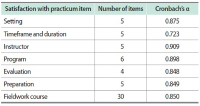
Abstract
This study attempts to draw the implications of student satisfaction with fieldwork courses in the library and information science (LIS) program in South Korea by determining the level of satisfaction experienced by students with practicums at a library and information service agency. LIS students with fieldwork experience were surveyed to assess their satisfaction and the factors affecting their satisfaction. Results from a multiple regression analysis revealed that from among factors of practicum settings, major-related attributes, and general attributes of respondents, “satisfaction with majors” and “interpersonal relationships” had a significant effect on satisfaction with practicums. Examining the six components of satisfaction with the course revealed that “practicum program” and “practicum setting” had a significant relationship with overall satisfaction. A selective intervention program to improve satisfaction with the course needs to be developed based on factors influencing overall satisfaction, focusing on “interpersonal relationship” and “satisfaction with majors.”


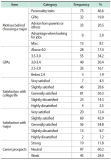
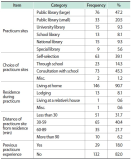

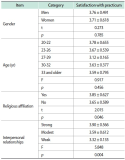





Abstract
Access to relevant information determines the quality of life of an individual in society and the academe. Academic institutions have established information literacy programmes to enhance students’ access to information. With the elevation of colleges of education to tertiary status in Ghana, pre-service teachers are now required to conduct research to improve their reflective thinking in order to be certified. However, the information access skills of students in colleges of education in Ghana are uncertain. This study draws empirical evidence from students in the Nusrat Jahan Ahmadiyya College of Education, Wa, Ghana on their information access skills. Primary data were collected from 303 respondents from the college using a stratified sampling procedure. The data were collected using a questionnaire and analysed using descriptive statistics. The results indicate that information is available to students through different sources such as the Internet, libraries, and contact with friends and authorities. However, students were limited in respect to access to relevant online resources for their academic activities due to inadequate information access skills. Potential solutions are discussed.






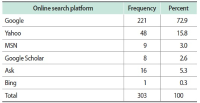

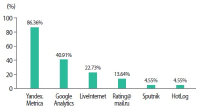
Abstract
Webometric research in the Russian library sector is just beginning to gain momentum. This article examines the experience of webometric research in libraries from the perspective of the global practice. In particular, it highlights a number of foreign works, which may have a special practical value for Russian libraries, and emphasizes important webometrics areas for libraries. The purpose of this study is to research the practical application of key performance indicators (KPIs) abroad and conduct a webometric analysis of the websites of some leading Siberian and Far Eastern scientific libraries based on selected KPIs. The study data were collected with SimilarWeb and other analytical tools. The study revealed that key traffic metrics are the basis of webometric research, and identified available promising groundwork for the purpose of their further testing. The shortcomings in the current state of the websites of the Siberian and Far Eastern scientific libraries were noted. Based on the obtained webometric traffic indicators, the ranking of the Siberian and Far Eastern scientific libraries was made.


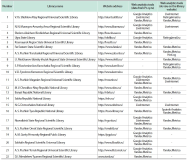


Abstract
This study is a preliminary study to develop an evaluation framework necessary for evaluating the DataON platform. The first objective is to examine expert perceptions of the level of DataON platform construction. The second objective is to evaluate the importance, stability, and usability of DataON platform features over OpenAIRE features. The third objective is to derive weights from the evaluation perspective for future DataON platform evaluation. The fourth objective is to examine the preferences of experts in each evaluation perspective and to derive unbiased evaluation criteria. This study used a survey method for potential stakeholders of the DataON platform. The survey included 12 professionals with at least 10 years of experience in the field. The 57 overall functions and services were measured at 3.1 out of 5 for importance. Stability was -0.07 point and usability was measured as -0.05 point. The 42 features and services scored 3.04 points in importance. Stability was -0.58 points and usability was -0.51 points. In particular, the stability and usability scores of the 42 functions and services provided as of 2018 were higher than the total functions were, which is attributed to the stable and user-friendly improvement after development. In terms of the weight of the evaluation point, the collection quality has the highest weight of 27%. Interface usability is then weighted 22%. Subsequently, service quality is weighted 19%, and finally system performance efficiency and user feedback solicitation are equally weighted 16%.

